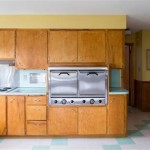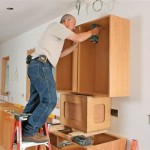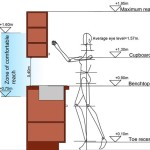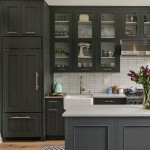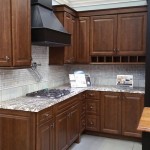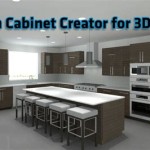Kitchen Cabinet Knob Placement: An Essential Guide to Perfect Placement
Kitchen cabinet knobs are a small but essential detail that can make a big impact on the functionality, aesthetics, and overall feel of your kitchen. While it may seem like a simple task, getting the placement just right can be crucial for creating a comfortable and efficient workspace. Here is a comprehensive guide to help you achieve perfect kitchen cabinet knob placement:
1. Determine the Right Height
The ideal height for cabinet knobs is primarily determined by the height of your cabinets and the average height of the people using the kitchen. For standard 30 to 36-inch-high cabinets, the knobs should be placed 2 to 3 inches from the bottom edge of the cabinet door. This allows for easy reaching and comfortable opening and closing of the cabinets.
2. Choose the Correct Spacing
The spacing between knobs is equally important for both functionality and aesthetics. To maintain a uniform and balanced look, it's recommended to space the knobs evenly apart. For double-door cabinets, the knobs should be placed equidistant from the edges of the doors and the center. The typical spacing for single-door cabinets is around 2 to 4 inches from the edges.
3. Consider the Type of Knobs
The type of knobs you choose will also influence their placement. Larger knobs require more space for comfortable gripping, so they may need to be placed farther apart. Smaller knobs, on the other hand, can be spaced more closely together. It's always wise to test the placement with your chosen knobs before drilling the holes.
4. Position for Easy Use
The primary purpose of cabinet knobs is to provide a convenient way to open and close the cabinets. Make sure the knobs are placed in a way that allows for effortless manipulation. Avoid placing them too far towards the edges of the doors, as this can make it harder to reach the knobs without bumping your knuckles.
5. Ensure Alignment
Precision and accuracy are key when it comes to kitchen cabinet knob placement. Use a level to ensure that the knobs are installed straight and level. Uneven knobs can not only be visually unappealing but also hinder the smooth functioning of the cabinets.
6. Template for Accuracy
To achieve consistent and precise placement, it's recommended to use a template. You can create a simple template using cardboard or plywood, marking the desired knob positions. This template can be used to drill the holes in the correct locations, ensuring accuracy and uniformity.
7. Practicality over Aesthetics
While aesthetics are important, functionality should take precedence when placing cabinet knobs. Avoid sacrificing comfort and ease of use for the sake of a certain design. Ensure that the knobs are positioned for optimal usability, especially in high-traffic areas of the kitchen.
Conclusion
By following these guidelines, you can ensure that your kitchen cabinet knobs are placed in a manner that enhances both the functionality and aesthetics of your kitchen. Proper placement will provide years of comfortable and efficient use, making your kitchen a more enjoyable and inviting space.

Learn How To Place Kitchen Cabinet Knobs And Pulls Cliqstudios

A Simple Guide For Ideal Cabinet Knob Placement

Design 101 Cabinet Hardware Placement Lark Linen

How To Place Cabinet Knobs Pulls

A Simple Guide For Cabinet Knob Placement Julie Blanner

Where To Place Cabinet Hardware Emtek

Cabinet Hardware Placement Guide

The Ultimate Guide For Cabinet Hardware Placement And Sizing Kitchen Inspiration Design

A Designer S Guide To Hardware Placement Aurainteriors Co Kitchen Knobs And Pulls Shaker Cabinets

How To Install Cabinet Handles Ultimate Stress Free Tips

